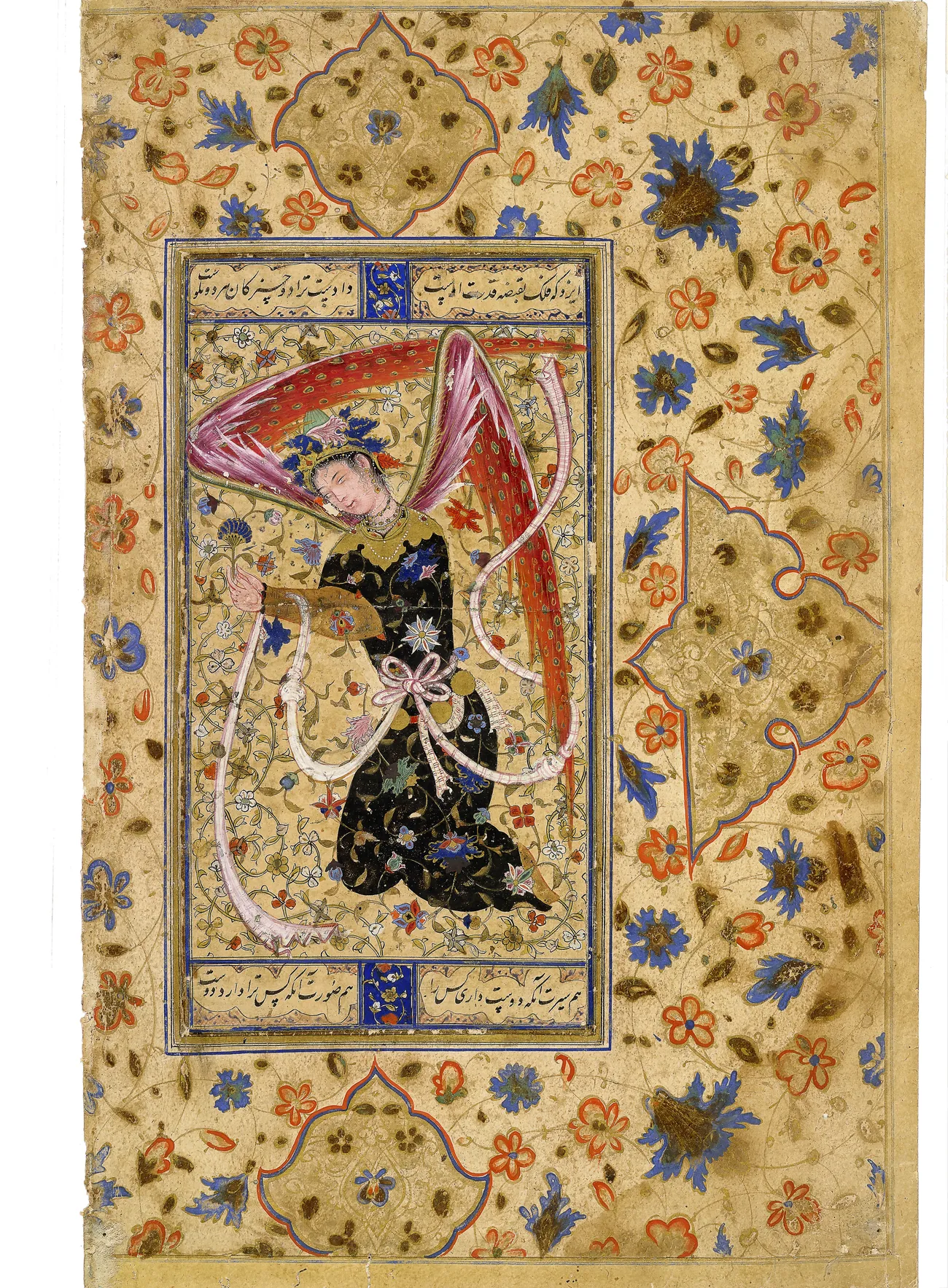The British Museum angelic portrait of ‘Hamida Banu Begum’ is depicted as a feminine-looking fairy with a carafe of wine instead of the royal handkerchief and a cup instead of the royal seal.
She is offering wine to the winged young boy who is stretching his arms towards her from the opposite page, ready to accept the cup with reverence and gratitude. This interpretation only supports the idea that this is not a couple in love, but an allegory of mother-filial love, where the mother shares the wine of divine knowledge with her son, according to the interpretation of wine as a Sufi term. This could be the allegory of the mother, providing her royal son with divine knowledge, which she would have received from her father Shaykh ‘Ali Akbar Jami.

You can learn more about the topic in the book-album "Central Asian Heritage in the Collections of Cambridge University" (Volume XXVIII) in the series "Сultural legacy of Uzbekistan in the world collections".
The main sponsor of the project is the oilfield services company Eriell-Group.
